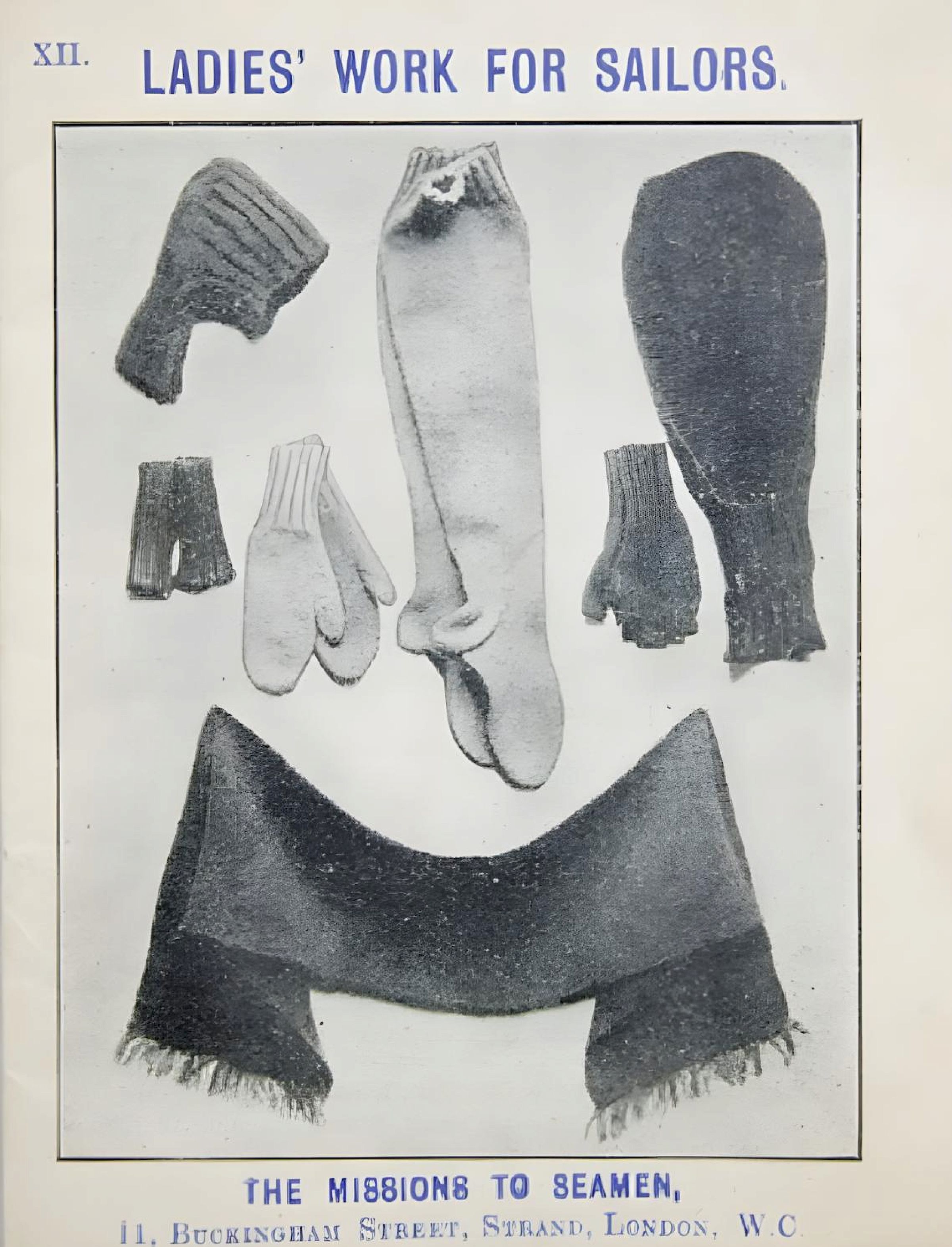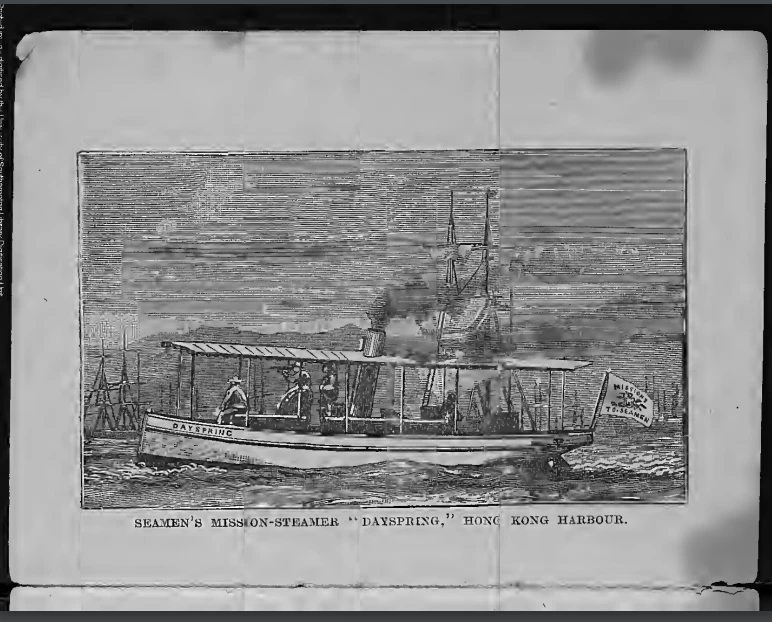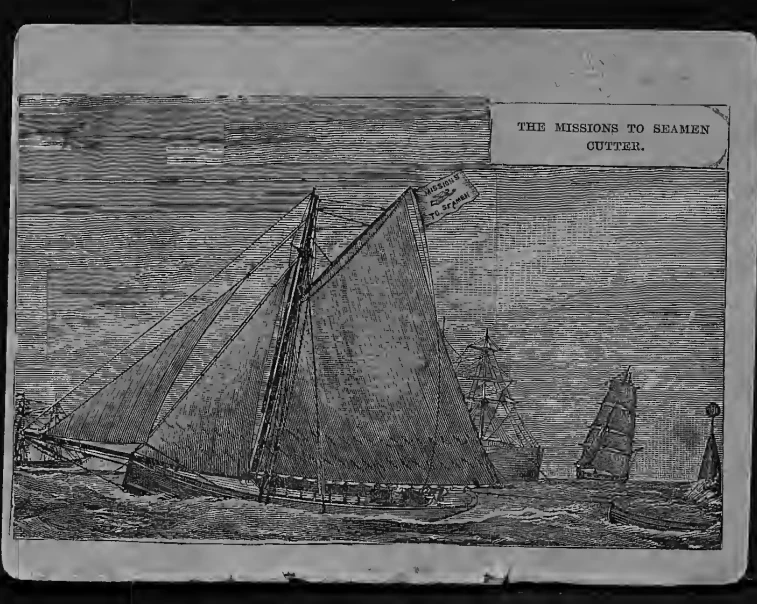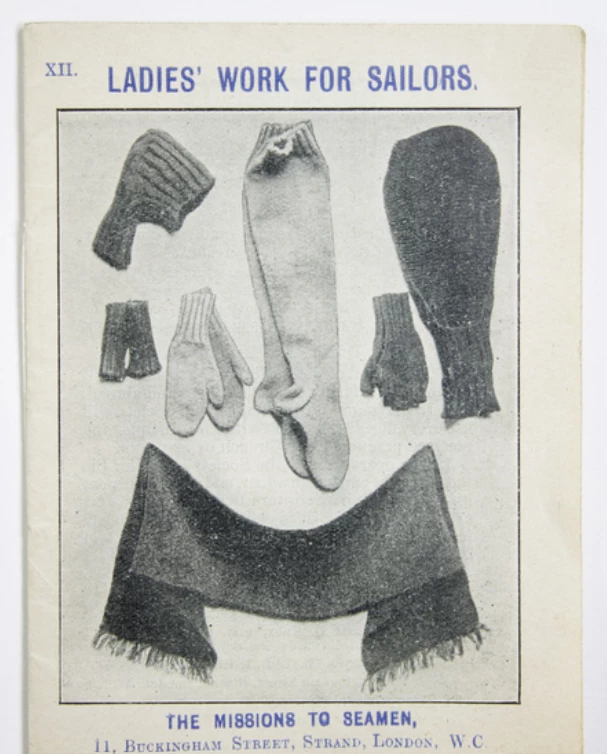
Ladies work for sailors
Women have contributed in many significant ways to the work of missions to seafarers. Marine industries were and are isolating and dangerous, and the risks were endured by families at home as well as those at sea. Women and children were associated with marine missions initially as subjects of charity, but by the 20th century they were playing a more assertive role.
Image: Finished garments for sailors. Source: Ladies Work for Sailors. (London: The Missions to Seamen, c. 1914). Mission to Seafarers Victoria, Victorian Collections [Digital Archive Museums Victoria]
Women and marine missions
Women have contributed in many significant ways to the work of missions to seafarers. Marine industries were and are isolating and dangerous, and the risks were endured by families at home as well as those at sea. Women and children were associated with marine missions initially as subjects of charity, but by the 20th century they were playing a more assertive role.
Women’s work is difficult to discern from the nineteenth century records of the larger maritime missions since they did not participate as members of the mission boards, salaried officers or the central executive. The first world war ushered in important changes reflecting the mobilization of women for the war effort at the home front. In 1913-1914, the Royal Sailors’ Orphan Girls Home and the London Ladies Association corresponded with the Mission to Seafarers (MtS UDMS/1/47), as did the Ladies Harbour Lights Guild Committee in Hull (MtS U DMS/2/3). A few years later, Lowestoft Mission to Seamen’s Ladies Committee and Advisory Committee was organized sufficiently to have its own Minute Book, which gives us a glimpse of the work done by women in British ports.
Ladies’ Harbour Lights Guild
The Ladies’ Harbour Lights Guild (LHLG) was first established in Melbourne in 1906 by Miss Ethel Godrey (1861-1935) in association with the Missions to Seamen. An early brochure (‘What is the LHLG?') suggests that it was created in response to the risk of marine travel, including the calamity of the sinking of the Titanic in 1912. It was subsequently followed by branches in other British ports. In the 1960s, the Guild merged with the Flying Angel League, which brought men and women volunteers together, however this was not the Victorian way.
Guild members visited sailors in port, but also organized the hugely popular creation of knitted garments for free distribution, including Christmas gifts, to sailors. These were sometimes referred to as ‘comforts’ but were also a practical supplement to everyday working wear for sailors at sea.
Image: A working party of the Melbourne Ladies Harbour Lights Guild, c. 1914. Source: Lucinda Horrocks,
‘Harbour Lights’ the documentry
‘Harbor Lights’ the documentry article: ‘From Ship to Shore’ Autumn 2020 (PDF)
Knitting
To a surprising degree, women’s contribution to mariners’ wellbeing has centred on knitting and sewing. The earliest pattern book distributed by the Mission to Seamen appears in around 1910 under the title ‘Ladies work for sailors’, edited by ‘Miss Warleigh’. It is recognised as a significant item of modern knitting heritage, and the illustrations below come from a copy in the Richard Rutt Collection of the Winchester School of Art Library, digitized by the University of Southampton. The cover has an image of a young sailor of the Royal Navy, and an older merchant seaman, with peaked cap, beard and pipe.
Image: Cover, Ladies’ Work for Sailors (London: The Missions to Seamen, c. 1910?). Source: University of Southampton, Internet Archive.
This little booklet includes instructions for making a range of items, which are listed in order of demand. What sailors most needed, according to this guide, were ‘forecastle book bags’ and ‘ditty bags’ in sturdy canvas. The most desirable knitted items, in rank order, were steering gloves, mittens, comforters, shields, sea-boot stockings, and ‘Uhlan caps’.
Although Ladies’ Work for Sailors is heavily illustrated, none of the images are of the items of work. Instead, they provide a cheerful view of mission vessels and chaplaincies maintained by The Missions to Seamen at home and abroad. These include a mission steamer in Hong Kong, a mission sampan in Singapore, and the Missions to Seamen cutter, which appears to be the ‘Eirene’ from the Bristol Channel Mission of 1843.
Image: Seamen’s Mission-Steamer ‘Dayspring’, Hong Kong. Ladies’ Work for Sailors (London: The Missions to Seamen, c. 1910?), opp. p. 5. Source: University of Southampton, Internet Archive. 
Image: ‘Missions to Seamen Sampan, Shanghai’. Ladies’ Work for Sailors (London: The Missions to Seamen, c. 1910?), opp. p.9. Source: University of Southampton, Internet Archive. 
Image: The Missions to Seamen Cutter’. Ladies’ Work for Sailors (London: Missions to Seamen, c. 1910?), opp. p.9. Source: University of Southampton, Internet Archive. 
Knitters would therefore have enjoyed the vicarious pleasure of imagining their garments being worn by seafarers voyaging between British ports, or across the ocean-straddling empire. More practically, later editions of the same handbook include a picture of the finished garments, which no doubt helped novice knitters achieve a more uniform and wearable finish to their productions.
Image: Finished garments for sailors. Source: Ladies Work for Sailors. (London: The Missions to Seamen, c. 1914). Mission to Seafarers Victoria, Victorian Collections [Digital Archive Museums Victoria]
Knitting for sailors continues to form an important role in women’s work for the Mission to Seafarers and other marine missions today. Garments are useful and provide a medium of exchange between strangers. How many items of hand-crafted garments have been created by knitters, both male and female, for missions seamen? It is likely that tens of thousands of items were produced since the work began 120 years ago. Few would appear to have survived, or been incorporated into textile collections. They provide tangible evidence of the work done by women to support marine families and extend hospitality and Christian fellowship to marine workers.
Mission to Seafarers Archives, Hull History Centre.
‘Harbour Lights – Women with a Mission 1914-1918’, Wind and Sky Productions, 3 March 2020. YouTube https://youtu.be/86UP6s6uGOo
Lucinda Horrocks, ‘Harbour Lights – the documentary’, Ship to Shore (Mission to Seafarers Victoria), Autumn 2020. Ship to Shore Autumn 2020 (PDF)
What is the Ladies’ Harbour Lights Guild? (Melbourne: LHLG, c. 1912)
Hilary Carey, 'Ladies work for sailors' Mariners: Race, Religion and Empire in British Ports 1801-1914, https://mar.ine.rs/stories/ladies-work-for-sailors/
Retrieved 14 May 2024